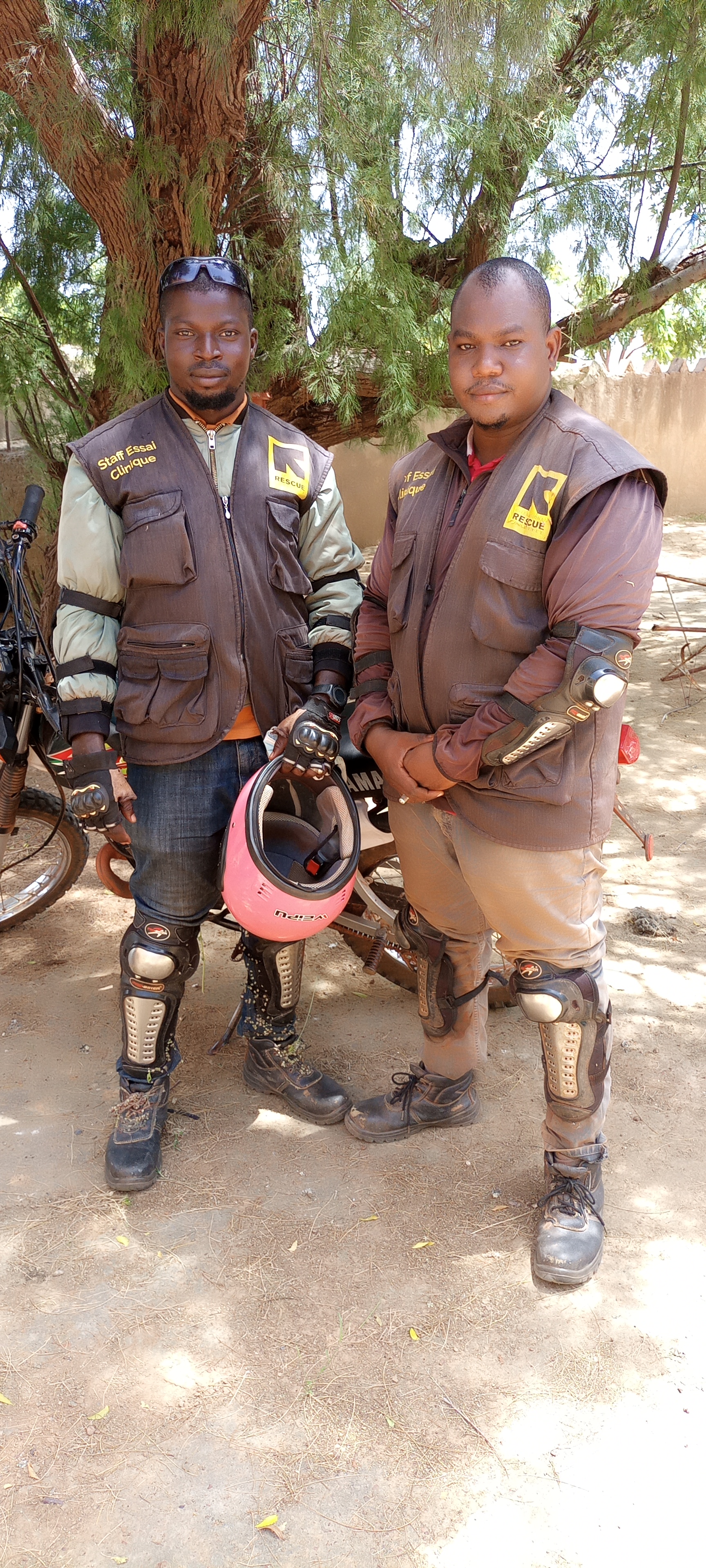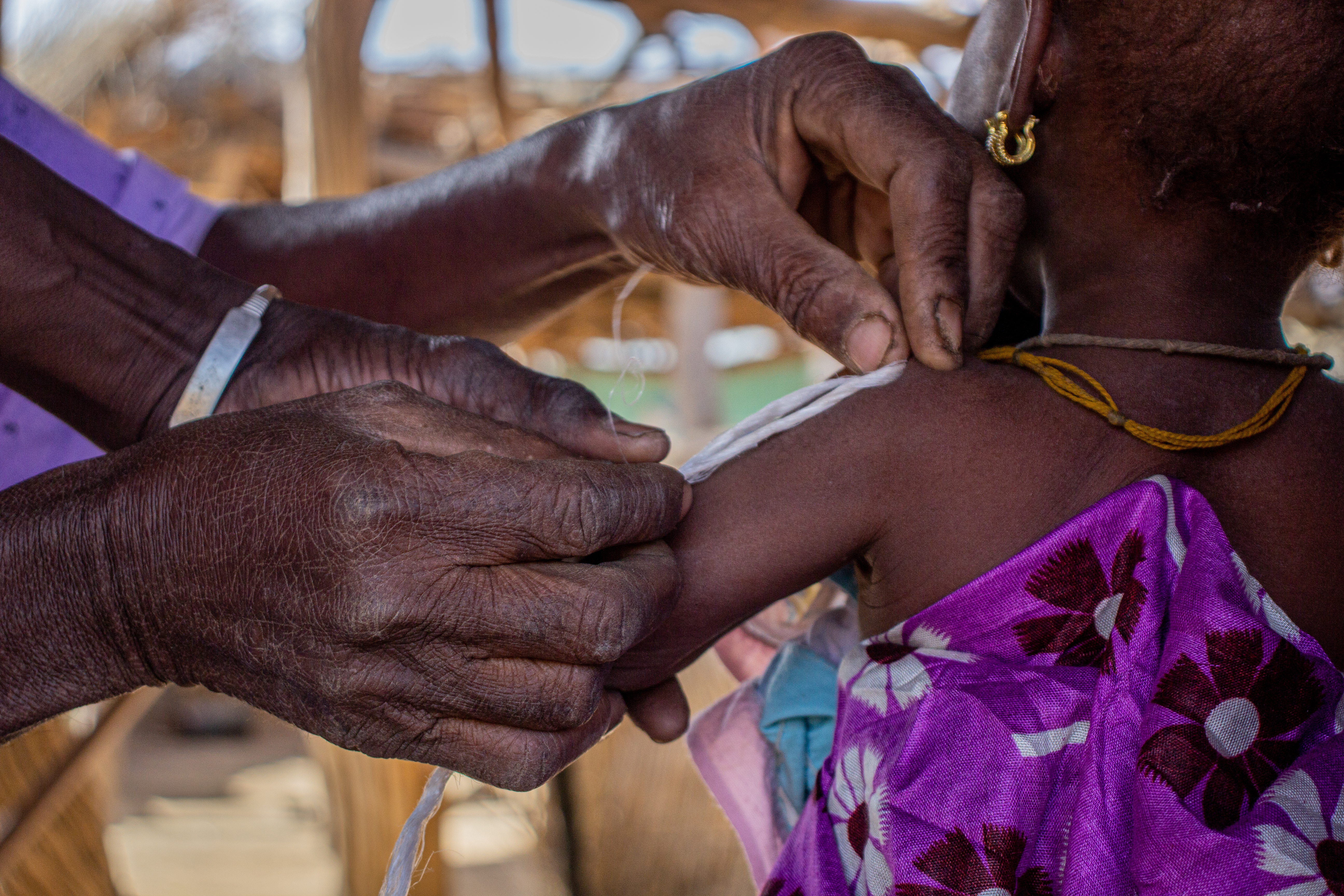
Treatment of severely underweight children
Expanding access to treatment for all children with nutritional deficits
Children with severely low weight-for-age face a heightened risk of mortality but are often overlooked for treatment because they don't meet the standard criteria for wasting, defined by a low mid-upper arm circumference (a measurement based on arm size) or low weight-for-height (a comparison of weight to height). To address this gap, the IRC launched a groundbreaking randomized controlled trial (RCT) in Mali in 2022. This trial is the first of its kind, testing whether children with low weight-for-age (WAZ), or a measurement comparing a child's weight to what is expected for their age, can benefit from treatment and how they might be effectively treated using a simplified protocol.
From October 2022 to April 2024, the IRC treated 1,397 children who were severely underweight but had a normal MUAC. This trial aims to inform the expansion of current admission criteria to better identify and treat at-risk children who are currently overlooked. Preliminary results are forthcoming and will guide future interventions to save more lives.

In addition to the RCT, we are conducting complementary studies and analyses to better understand both the risks and benefits of treating children with low weight-for-age who are not currently eligible for care, as well as the long-term health outcomes for children in need of treatment for malnutrition.
body composition to assess the benefits and risks of treating underweight children to enhance our understanding and improve care. This will help determine if treatment increases the risk of adiposity, a concern for chronic diseases in adulthood. The study addresses key policy and clinical questions regarding the impact of our protocol on underweight children who currently don't qualify for treatment.
High risk high benefit: In addition to testing the effectiveness of treatment, the study is also analyzing which children with low weight-for-age but normal MUAC are at highest risk of worsening health if left untreated, and which are most likely to benefit from receiving supplementary food. This includes identifying specific characteristics, like age or history of malnutrition, that may signal a child is both vulnerable and responsive to treatment. The goal is to better target care by focusing on children who are most at risk and most likely to recover with support. These findings will help refine future guidelines so that life-saving treatment reaches the children who need it most but are currently missed by existing criteria.
Deuterium dilusion: The IRC has launched a sub-study to develop a robust equation for estimating body composition in Malian children using field-friendly bioimpedancemetry. To do this, we’re comparing results from bioimpedancemetry with those obtained through deuterium dilution—a gold-standard but technically demanding method for measuring body composition. This sub-study will strengthen the main trial by allowing us to accurately interpret body composition data and assess the potential impact of nutritional treatment.
These studies collectively aim to refine our treatment protocols and optimize our approach to combating malnutrition, ultimately guiding future interventions to save more lives.

Project Timeline
Deuterium dilution study
The IRC has launched a sub-study to develop a robust equation for estimating body composition in Malian children using field-friendly bioimpedancemetry. To do this, we’re comparing results from bioimpedancemetry with those obtained through deuterium dilution—a gold-standard but technically demanding method for measuring body composition. This sub-study will strengthen the main trial by allowing us to accurately interpret body composition data and assess the potential impact of nutritional treatment.
The IRC started a secondary analysis to look at who are the children with severe underweight who benefit most from treatment
Donors
- Sheryl Sandberg & Tom Bernthal Family Foundation
- Thompson Family Foundation
- GATES